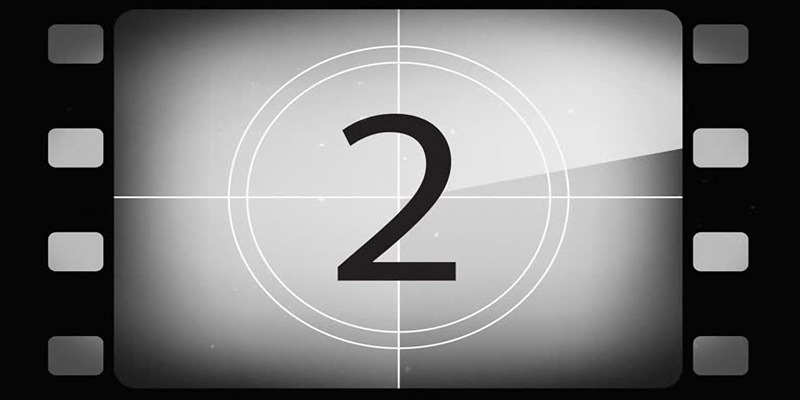Step-by-Step Guide to Making a Video Essay That Inspires
Advertisement
Creating a video essay isn’t just about stringing together clips and narration. It’s about storytelling, creativity, and connecting with your audience on a deeper level. Video essays offer a unique way to explain complex ideas, share your perspective, or analyze art, culture, and history in a visually compelling format. Whether you’re new to the concept or looking to refine your skills, this guide will walk you through every step to craft a video essay that not only informs but inspires.
What is a Video Essay?

A video essay is a creative audiovisual piece that combines video, narration, text, and music to explore a specific idea or topic. Think of it as a visual form of storytelling designed to provoke thought, spark emotions, and communicate your interpretation of the world.
Unlike a typical essay, which relies solely on text, a video essay uses visual and auditory tools to enhance the viewer’s understanding and engagement. They’re used in everything from academia to YouTube channels and are growing in popularity for their ability to entertain and educate simultaneously.
Why Make a Video Essay?
1. Share Your Perspective
When creating video essays you have an opportunity to share your distinctive viewpoint about the subject matter. The format of video essay enables users to explore visual directorship while studying historical times or social concerns through creative and compelling presentations of their perspectives.
2. Engage with a Bigger Audience
Visual content gets more attention than text alone, and video essays, when done well, can captivate wide audiences. Platforms like YouTube, Vimeo, or TikTok are fantastic for sharing your essay and starting conversations.
3. Showcase Your Skills
From concept development to scriptwriting, videography, and editing, creating a video essay is an excellent way to highlight your creative talents. Whether you're pursuing film, writing, or media production, you'll impress with this versatile skill set.
Step 1: Choose a Compelling Topic
The foundation of any great video essay is a strong idea. Think about topics you're passionate about or love researching. Examples might include:
- Analyzing a director’s specific filmmaking techniques.
- Exploring themes in a novel and how they relate to current issues.
- Dissecting cultural trends and their origins.
Ask yourself these three questions when brainstorming:
- What subject fascinates me the most?
- What unique perspective can I bring to this topic?
- Who is my target audience?
Start small. Instead of tackling a broad subject like "The History of Animation," narrow it down to "How Studio Ghibli Uses Sound to Tell Stories."
Step 2: Research Like a Pro
Once you’ve chosen your topic, it’s time to research. Your credibility hinges on how well you understand the subject, so give yourself enough time to:
- Watch, Read, and Analyze: If your essay is about a film or book, re-watch or re-read it with a critical eye. Take notes on notable moments.
- Gather Supporting Sources: Use academic articles, interviews, blog posts, or videos for further analysis.
- Fact-Check: Misinformation will hurt your essay’s trustworthiness. Double-check your sources for accuracy.
Organize your research into a document so you can refer to it easily while writing your script.
Step 3: Write Your Script
Your script is the backbone of your video essay. It connects the visuals, narration, and ideas into one coherent narrative. Here’s how to write a strong script:
- Start with a Hook: Grab the audience’s attention early with a striking fact, question, or visual. For example, “Did you know Studio Ghibli animators drew 80,000 frames for 'Spirited Away' by hand?”
- Develop Your Argument: Lay out the key points you’ll discuss, structuring your essay with a clear beginning, middle, and end.
- Keep It Conversational: Narrate the way you would explain something to a friend. Avoid overly complex phrases.
- Include Visual Cues: Add notes about which clips, images, or transitions you’ll use at different points.
Step 4: Gather Your Materials
With your script finalized, start compiling all the materials you’ll need for your video essay:
- Film and Video Clips: Use footage that supports your points. Be mindful of copyright laws. Most platforms allow limited use of clips under fair use if you're providing critique or commentary.
- Images or Screenshots: Visual diagrams, photos, or screenshots can help emphasize key ideas.
- Background Music: Choose music that complements the tone of your essay. Websites like Epidemic Sound or Artlist offer high-quality royalty-free music.
- Additional Graphics: This might include subtitles, motion graphics, or animated visuals created in software like Adobe After Effects.
Step 5: Edit Like a Pro
Editing is where your script meets the visuals and everything comes to life. Here’s how to edit effectively:
Choose Your Tools
Popular editing software includes:
- Beginners: iMovie, Filmora, or CapCut
- Intermediate to Advanced: Adobe Premiere Pro or DaVinci Resolve
Combine Your Clips
Import your video, audio, and images. Align them to match the pacing of your script.
Add Transitions and Effects
Use transitions sparingly to smooth scene changes, and consider effects like zoom-ins or slow motion to highlight significant moments.
Record and Sync Narration
Make sure your voiceover matches the visuals. Invest in a good-quality microphone for clear audio.
Add the Finishing Touches
Polish your video with subtitles, music, and color grading to unify the overall look and feel.
Step 6: Share Your Masterpiece

Your video essay is complete, and now it’s time to share it! Consider these platforms:
- YouTube for long-format essays.
- Instagram Reels or TikTok for shorter, bite-sized versions.
Write an engaging title, description, and tags to increase visibility. Example:
- Title: "How Studio Ghibli Uses Color to Tell Emotional Stories"
- Description: “A visual breakdown of how color enhances storytelling in Studio Ghibli films, focusing on classics like Spirited Away and My Neighbor Totoro.”
Once published, ask friends and fellow creators to provide feedback. Use their input to improve future projects.
Final Thoughts
Creating a video essay that inspires requires a blend of thoughtful planning, creativity, and strategic execution. By researching deeply, scripting effectively, and presenting your ideas with a strong visual and narrative structure, you can create content that resonates with your audience. Don't forget to leverage social media platforms to share your work and gather feedback, as this will help you grow as a creator.
On this page
What is a Video Essay? Why Make a Video Essay? 1. Share Your Perspective 2. Engage with a Bigger Audience 3. Showcase Your Skills Step 1: Choose a Compelling Topic Step 2: Research Like a Pro Step 3: Write Your Script Step 4: Gather Your Materials Step 5: Edit Like a Pro Choose Your Tools Combine Your Clips Add Transitions and Effects Record and Sync Narration Add the Finishing Touches Step 6: Share Your Masterpiece Final ThoughtsAdvertisement
Related Articles

Top 3 Video Meme Makers to Unleash Your Creativity Today

3 Easy Ways to Create a Stunning Memory Video on Your iPhone

LightCut 2025 Review: The Best Video Editor for Android and iPhone

Step-by-Step Guide to Fix MXF Files Not Playing on Premiere Pro

The 13 Best Shopify Apps in 2025 to Boost Your E-commerce Game

6 Ways to Automate Your Customer Support for Better Efficiency

How to Make a Lyric Video That Boosts Your Music’s Impact

Discover the Best Tools for Crafting Stunning Video Intros

Top Tips for Designing Eye-Catching Video Presentations on Any Device

How to Make Your Spotify Account Private in Easy Steps?

OBS Screen Recorder Review: Is It the Ultimate Tool for Your Needs?

 knacksnews
knacksnews